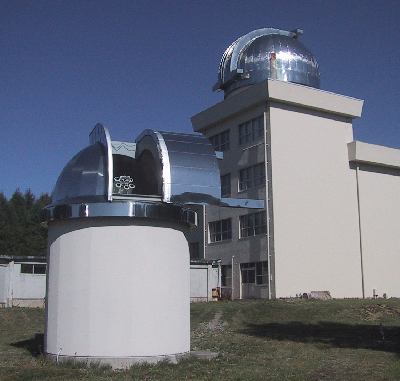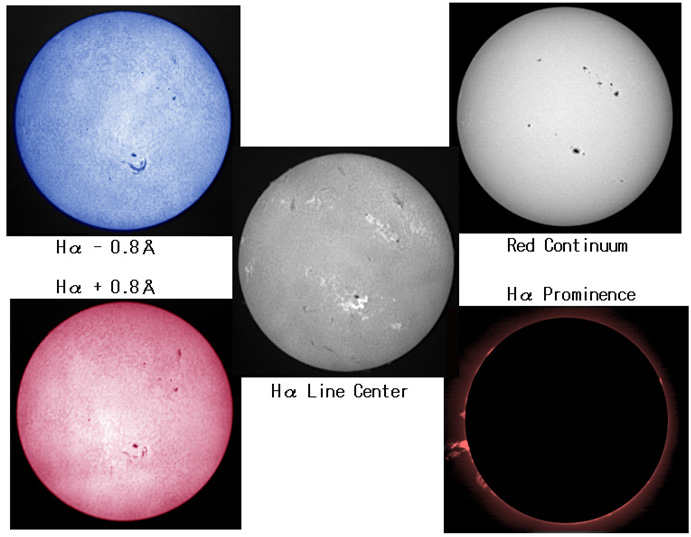|
The Flare Monitoring Telescope (FMT) was constructed in 1992 at
Hida Observatory in Japan to investigate the long-term variation of
solar activity and explosive events. It has five solar imaging telescopes
that simultaneously observe the full-disk Sun at different wavelengths
around H-alpha absorption line or in different modes.
Therefore, the FMT can measure the three-dimensional velocity field
of moving structures on the full solar disk.
|

FMT-dome at Hida Obs. |
 |
The science target of
the FMT is to monitor solar flares, erupting filaments and shock waves
(Moreton waves) continuously all over the solar disk and to investigate
the correlation between the characteristics of the erupting phenomena
and the geoeffectiveness of the corresponding CMEs.
Moreover, by estimating solar UV radiation from solar chromospheric images,
to compare it with the ionospheric variation.
|
We are promoting a worldwide
project called as "Continuous H-alpha Imaging Network (CHAIN)-project" whose aim is reinforcement of multi-wavelength H-alpha observations of the full-disk Sun by formation of an international network of ground-based solar stations.
This project has been pushed by an international space weather project in Japan entitled "Basic Study of Space Weather Predictions (*)" under the CAWSES-CAWSESII program, and
it is also an important IHY-ISWI project of our observatories.
|
As part of this project, we moved the FMT from Hida Observatory to
Ica University of Peru in 2010 as the 1st oversea
CHAIN's instrument, and we have supported installing the 2nd oversea FMT in
King Saud University of Saudi Arabia.
Moreover, the 3rd FMT is planned to be installed in Algeria.
By using these FMT telescopes and SMART telescope at Hida Observatory
in Japan, we will be able to observe solar active phenomena for
24 hours continuously.
|

|
(*) Grant-in-Aid for Creative Scientific Research of the Ministry of Education Culture, Sports, Science and Technology (MEXT): 17GS0208, PI: K. Shibata
|

